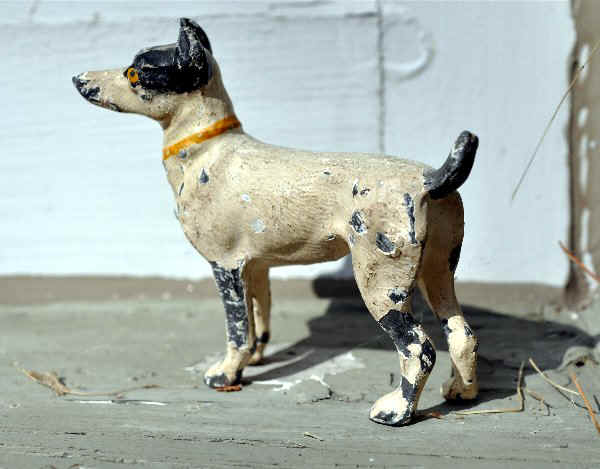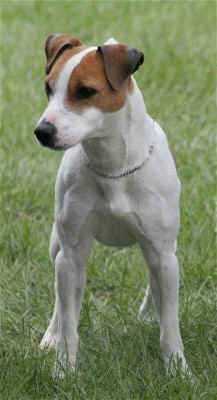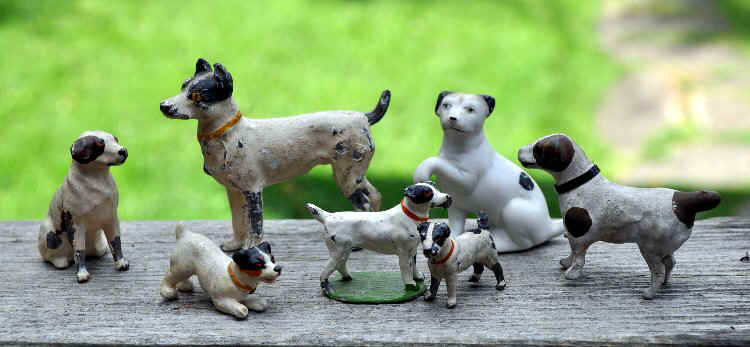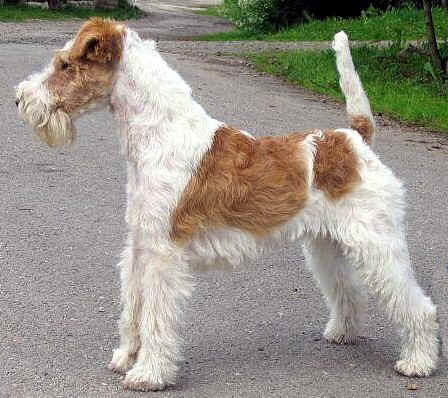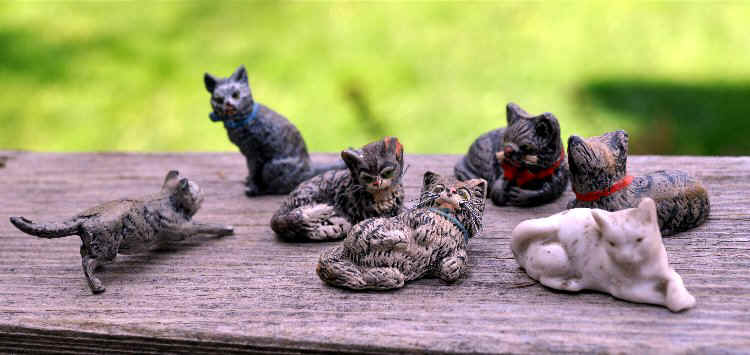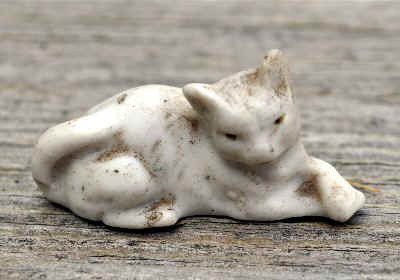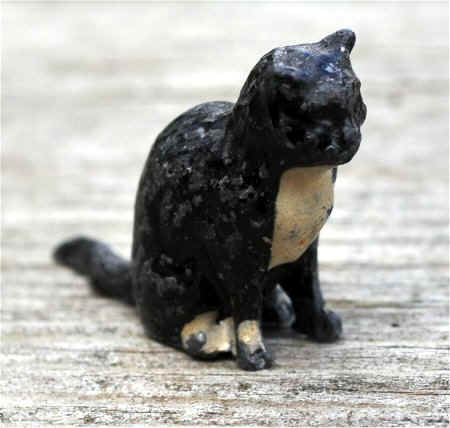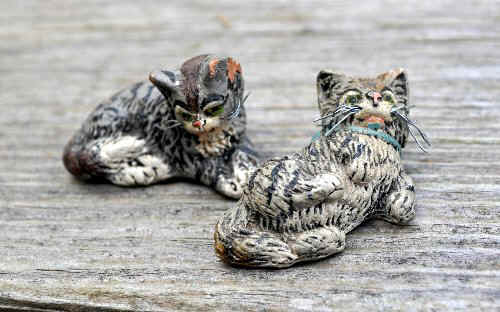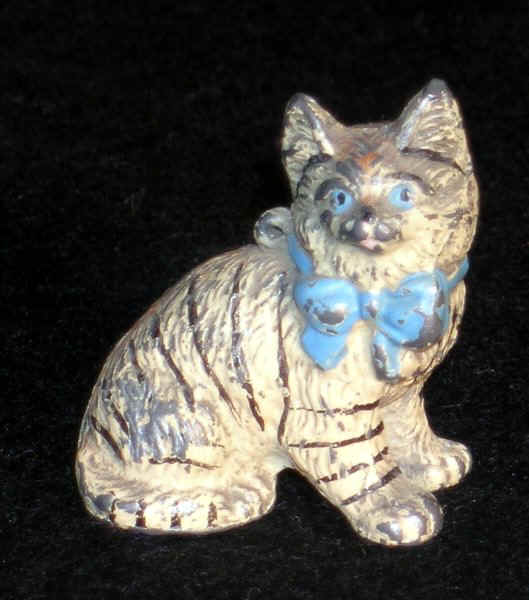GALLERY of IMAGES continued section 8: outdoors on the porch and in the yard: pets, privies, pools, wells, automobiles, horses, birds, benches, fences, people in outdoors clothing.... (please see Gallery 3 for stables, barns, animals, etc.; please see article on lights (in 3 parts) for outdoor lamps) images & photography: Jennifer McKendry © home page GALLERY of IMAGES 1 GALLERY OF IMAGES 2 GALLERY OF IMAGES 3 GALLERY OF IMAGES 4 GALLERY OF IMAGES 5 GALLERY_OF_IMAGES_6 GALLERY OF IMAGES 7 INDEX of GALLERY
Wicker furniture (pressed and painted cardboard in the case of the dollhouse furniture) looks good on the porch or lawn. The doll party set is from 1929; the type has been identified as "Korbi" made by Karl Schreifer, Germany (source: S. Kölher in D. Zillner); in the background is a Schoenhut house from the 1920s (see Gallery 2).
The real pieces on the left are in an enclosed porch from an American book of 1927 (Builders Woodwork, Iowa), and those in an ad of 1926 right are in a living room.
Recessed porch of a Gottschalk house* of 1910 with a bisque man in his original clothes, metal (painted white) planter and a rocking chair, 2¼ inches high. It imitates the forms of bentwood introduced by Michael Thonet (1796-1871), born in Prussia. The popularity of rockers with elegant scrolls ranged over a long period of time during the second half of the 19th century. Watering cans and -- of course -- cats are part of the porch scene. * see also Gallery 2,
Flower pots and urns decorate steps and balconies, which may also attract pigeons checking out pet birds in cages. Details from a set of rooms, possibly British, late 19th century (the foundation wall and steps are recent additions).
Silver & red metal fence surrounding a 1914 Converse* House (American); the slots accommodate tabs on any side. (*see History of Dollhouses 1910-1920)
Painted cast-iron fence with gates that swing open
Painted cast-iron benches, American, the red and gold example is shown in the Stevens & Brown catalogue of 1872, They may have been meant for parlours but look well on a porch or lawn. In the background is McLoughlin's garden house* c1910, New York, which has a wonderful formal garden and ornamental pool below. (*see History of Dollhouses 1890s)
Round pool made from an antique pottery saucer (6 inches diameter) for a real flower pot; the "water" is a modern product laid on top of pieces of foam -- the "water" surface can be pierced and plants stuck through so that they seem to be growing in the water; the stork is metal, as is the small water bird, the swans china and the pelican composition with metal legs; all are hand-painted and likely German (only the swans and pelican are stamped Germany) early 20th century.
Swan pool, 1924-1926, German, Der Universal-Spielwaren-Katalog
Pond with painted metal fowl, cats and dogs; made in England, France and Germany; early 20th century (modern trees & "water")
Metal swan, 1¼" high, marked ""FRANCE DEPOSE [registered] B.F." with cygnet riding on its back; floating duck marked "FRANCE"; exotic bird (on right) marked "MADE IN FRANCE"
Bickering geese at a pond, which may have been made for a vintage large-scale train setup.
Painted composition horse with original leather harness and reins (replaced mane, tail and saddle), likely German c1910, 4¾" high; metal dogs c1920s; composition doll in felt clothes c1920s; American cast-iron benches c1870; in the background, McLoughlin's garden house c1910, New York
Original harness and saddle (reins are modern) on a composition horse with wooden legs
The horse yields to the automobile; even cars in bad shape can make a garage look more interesting; Tri-ang house*, British, late 1930s; painted metal limousine by Bing of Germany, shown in the Sears Roebuck catalogue of 1923 along with a roadster and double garage. * for Tri-ang, see History of Dollhouses 1930s, part 1.
Smaller and larger versions of mid 1920s painted metal automobiles by Orobr with a German chauffeur in his original uniform; his cap is part of the bisque mould; the larger car has luxury seats. Advertisement for a toy Ford sedan in the 1925 Butlers Brothers catalogue.
Although too small a scale for most dollhouses (6½ inches overall length), this bakery delivery wagon is a delight. The baker was F. Ray. It was made of painted wood in the USA, perhaps in the 1920s or '30s, The horse retains most of his well made leather harness. The African-American driver wears clothing made of real fabric.
below real bakery delivery wagon in Quebec City, Canada, early 20th century
Wells were essential in areas not serviced by municipal water systems. The small one (2½ inches high) above is moulded and painted metal stamped "France B. P.[?] Deposé" (Registered). The taller German one (6½ inches high) is painted tin. Both have working handles, original pails; mid 1920s .
right Well with open roof and two buckets, German, 1924-1926 Der Universal-Spielwaren-Katalog
Painted metal pump and drinking trough, 1920s
Chopping and splitting firewood and kindling to feed North American fireplaces, iron cook stoves and heating stoves was a never ending task before coal became popular as the 19th century ended
Another necessity was an outhouse or privy, in this case the "World's Smallest Library", dated 1938 left, while below is one containing the "Seats of the Mighty" -- a double-holer
Birds perching on chimneys to survey their territories
What dollhouse yard is complete without a guard male peacock?
It is an asset to find dolls dressed in outdoor clothing, such as coats and hats, and carrying parasols. The illusion of action adds a dynamic quality, such as in the act of entering or leaving through a doorway.
The mother's hat adds to the "reality" of being out in the yard while pushing her twins, also in their original outdoor outfits in a metal carriage meant to represent a carriage body made of wicker. All the dolls are German, late 19th to early 20th centuries.
Their faithful companion is a spotted dog of loving disposition, as he gazes up with his long tail curling between his legs, while trying not to look too subordinate in his oversized bow. German, cloth covered, glass eyes, c1900.
Below are the jokers, ready to get into mischief, any time anywhere. The standing dog is painted metal and his companion is painted bisque. Neither is marked but likely German. The dog on the right is 1 inch high.
A pack of spotted dogs, mostly terriers, made from metal or bisque, hand painted, two are marked Germany
Mousers and companion pets, these cats are hand painted metal or composition or bisque. The black & white metal cat on the left is only ¾ inch high and likely British; the white cat is 1½ inches long, stamped Germany, and even more appealing than comes across in the camera's eye.
Marked Germany, these hand painted composition cats with whiskers are waiting for a sucker to rub their bellies before they dig in with their claws.
below A sweet tabby with a blue bow. Hand painted metal, 1½ inches high, unmarked but likely German
PLEASE EXPLORE THE OTHER TOPICS ON DOLLHOUSES. THANK YOU FOR VISITING! top of page home page history of dollhouses dolls for dollhouses 1 lights for dollhouses references on dollhouses & miniatures earearearly furnishings pre 1890 GALLERY of IMAGES 1 GALLERY OF IMAGES 2 GALLERY OF IMAGES 3 |
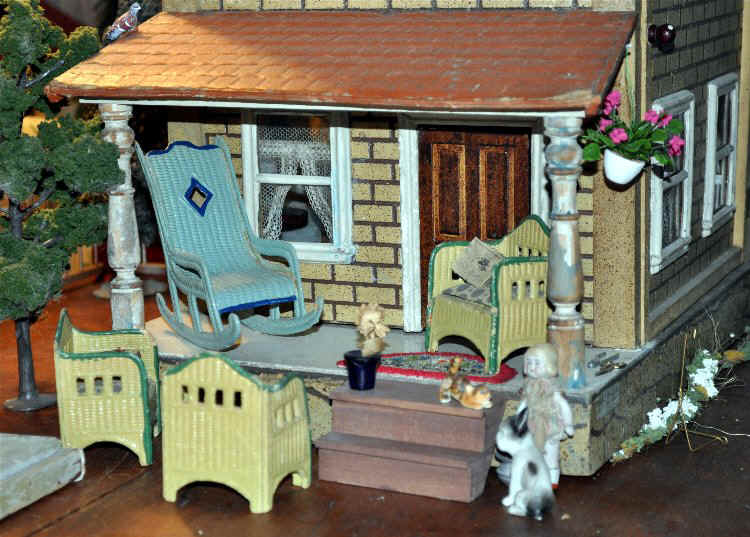
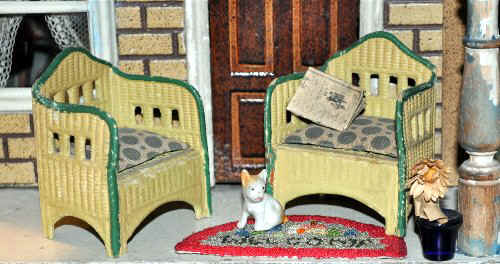
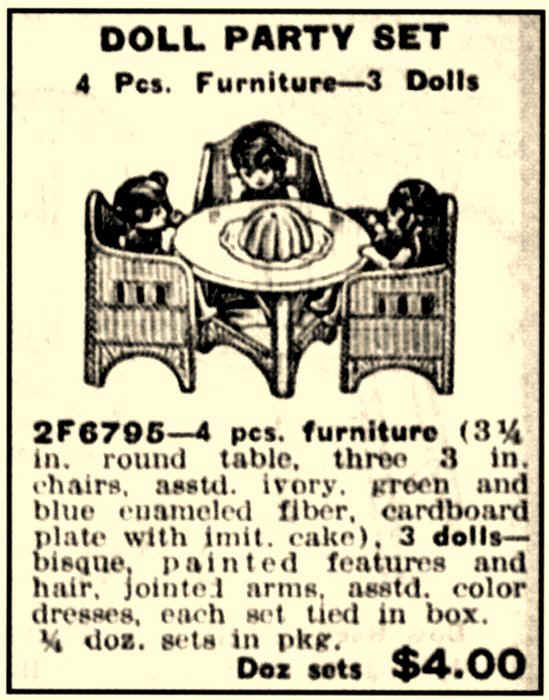
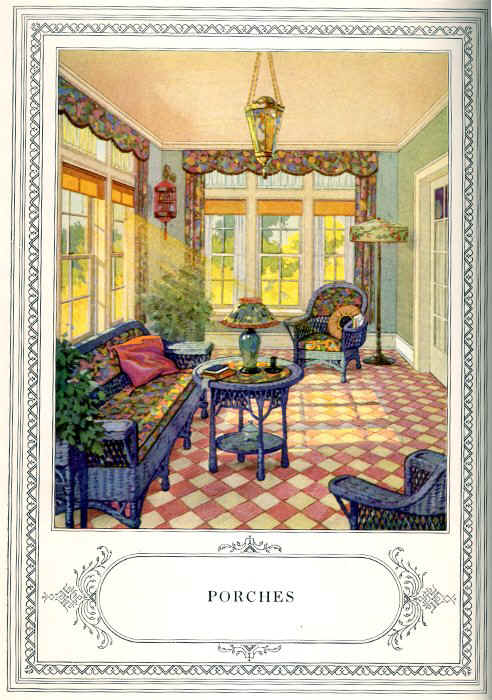
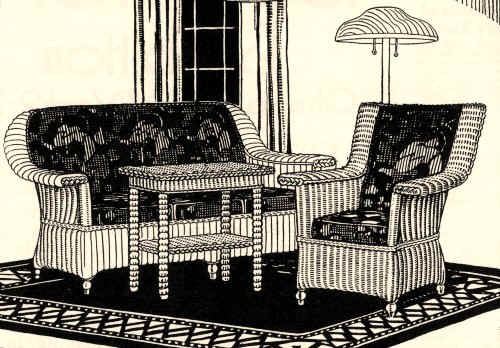
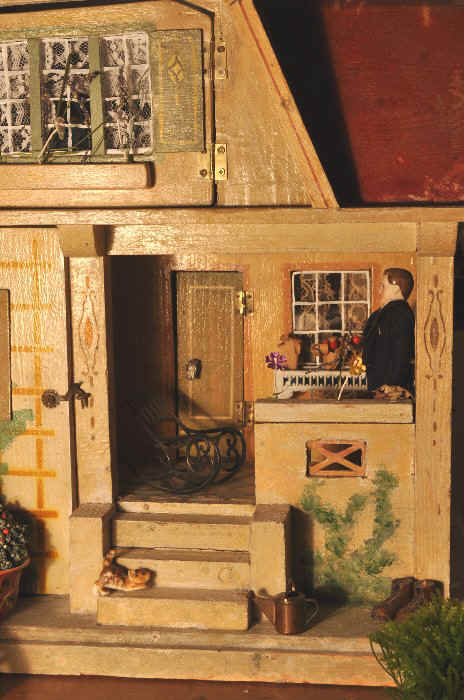
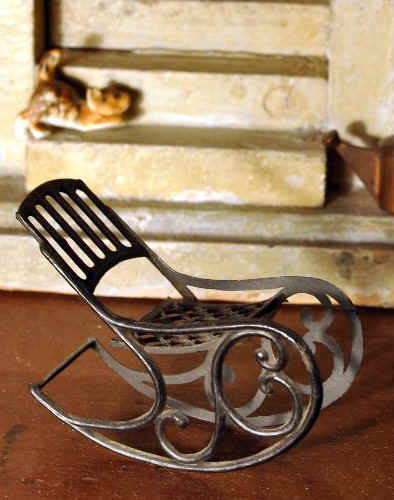
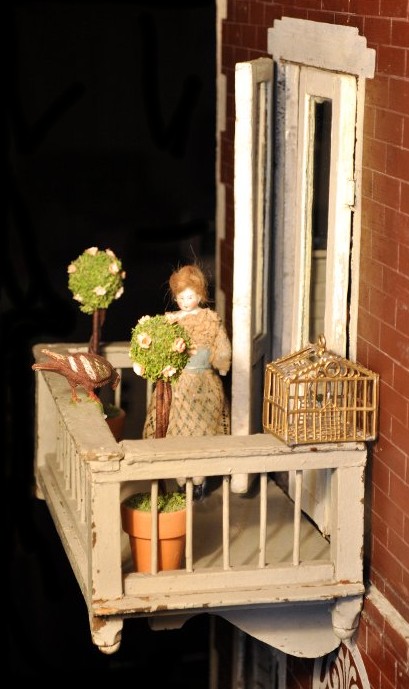
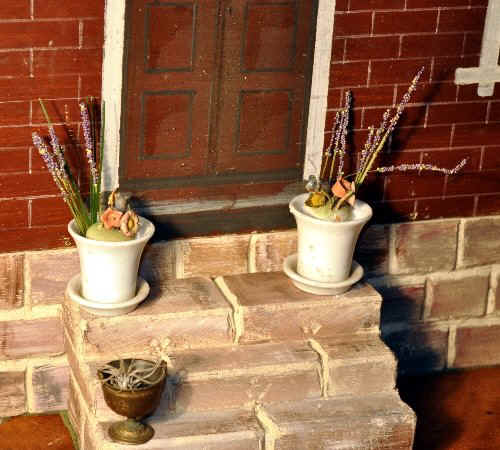

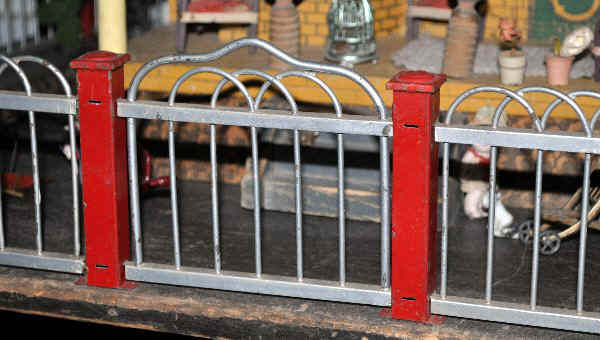

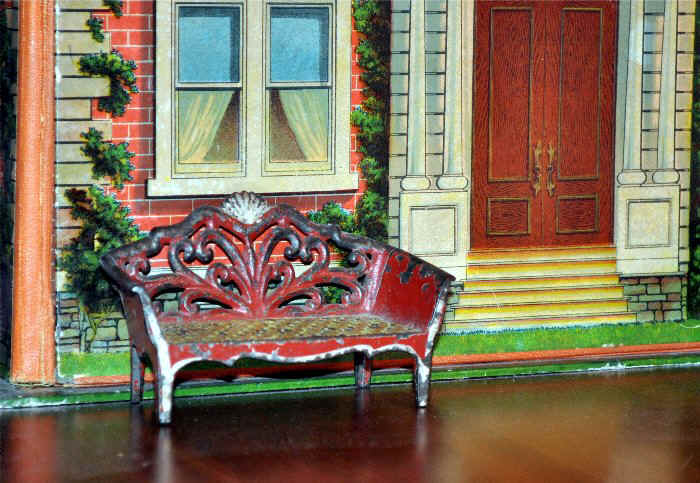
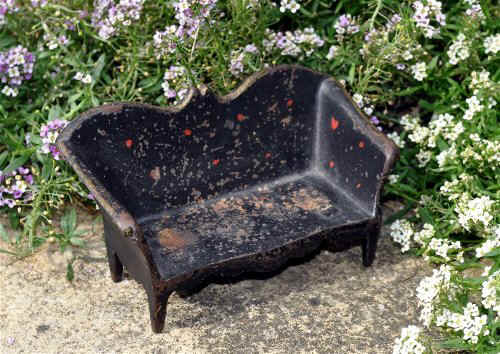
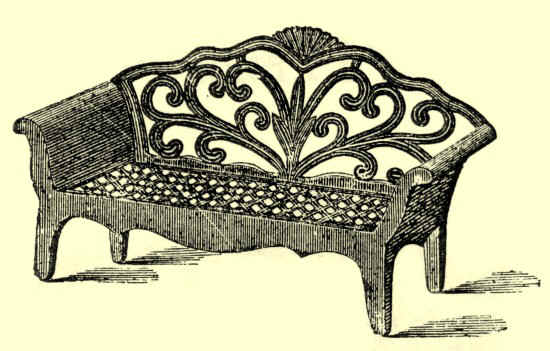
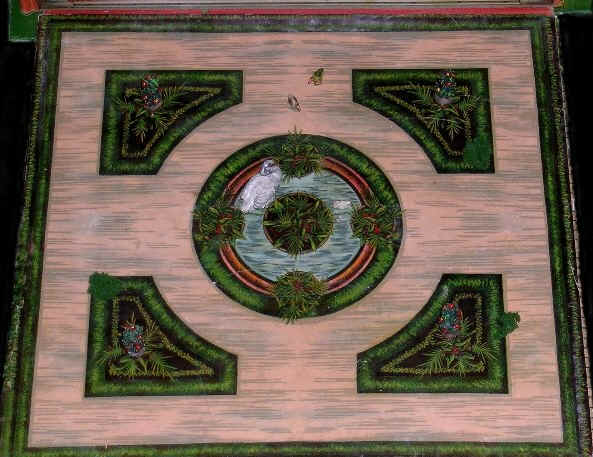
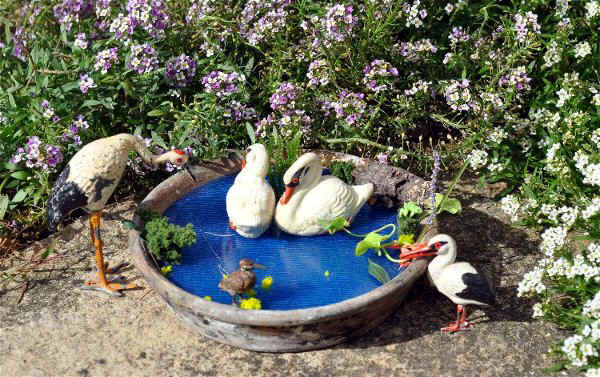
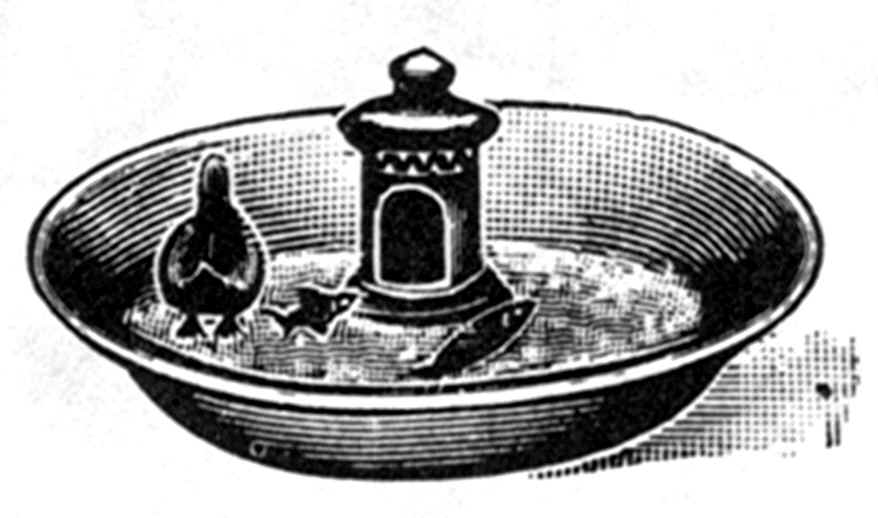
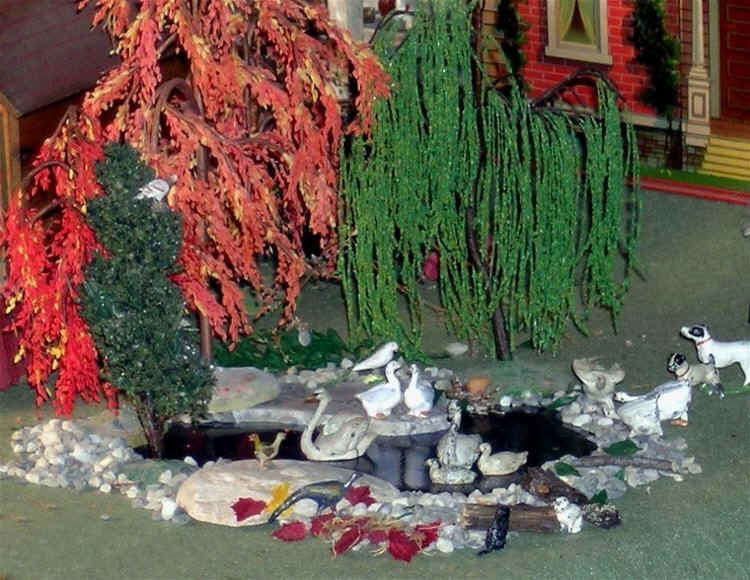
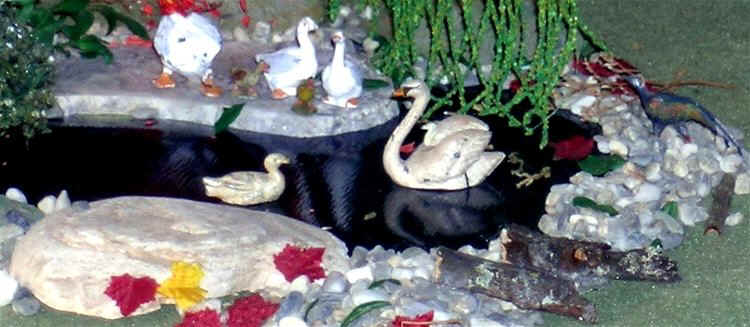
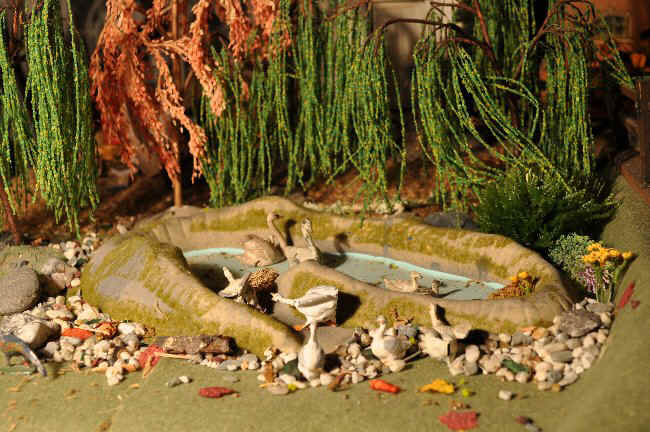
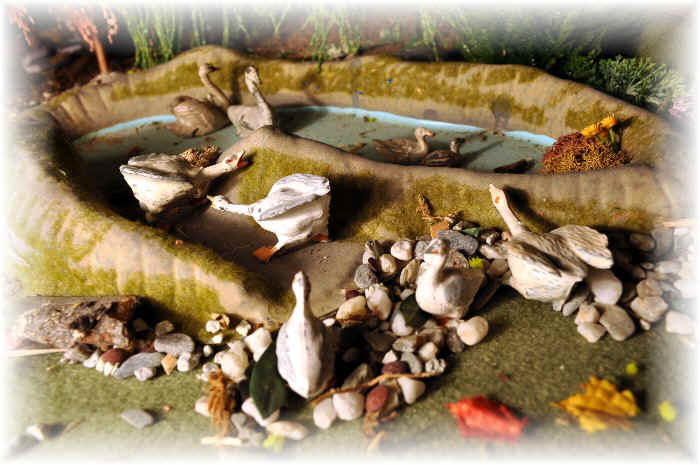
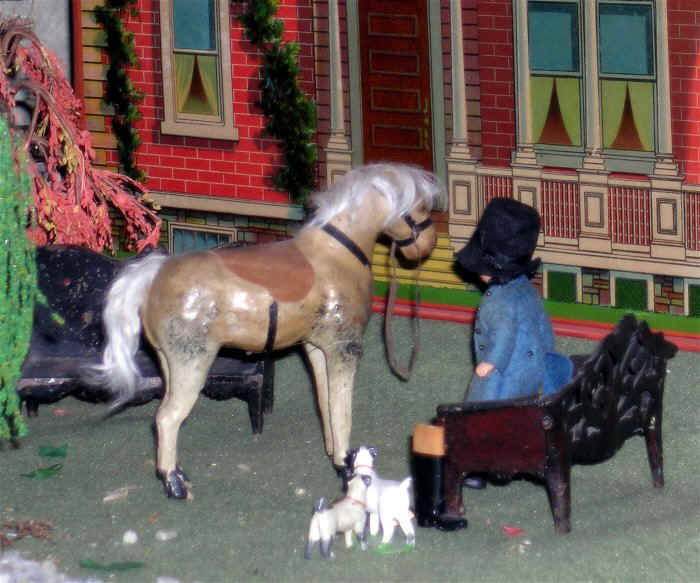
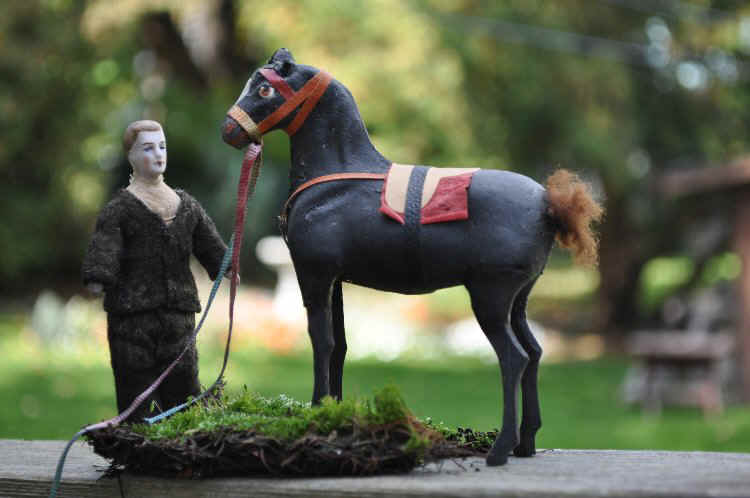
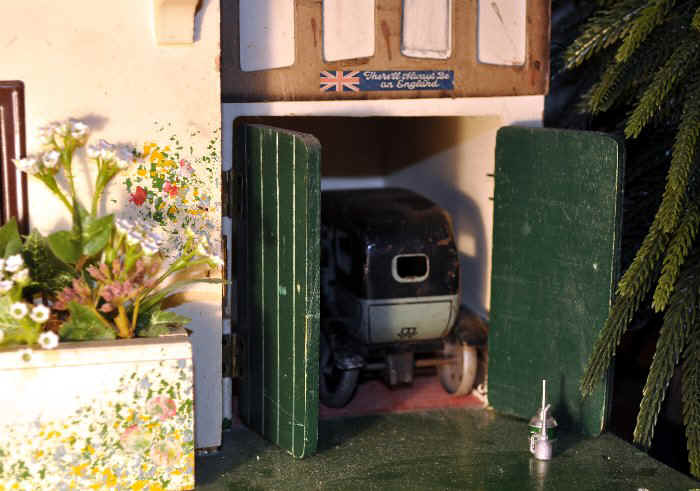
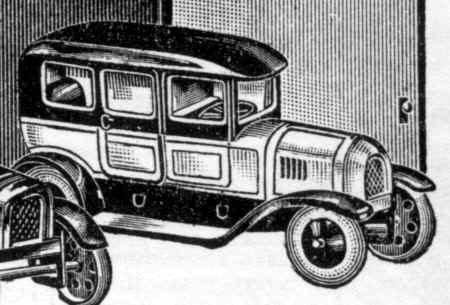
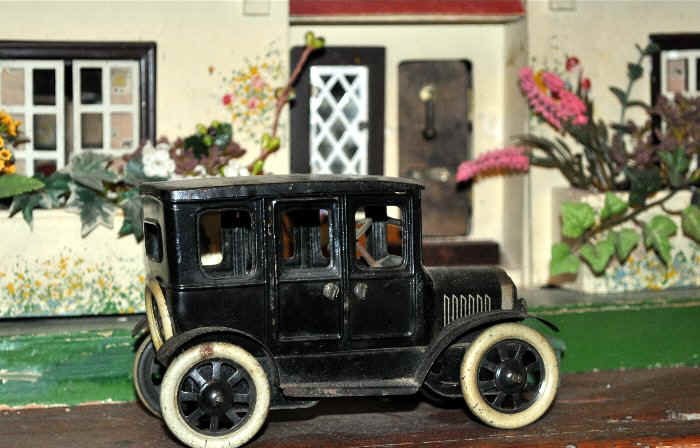
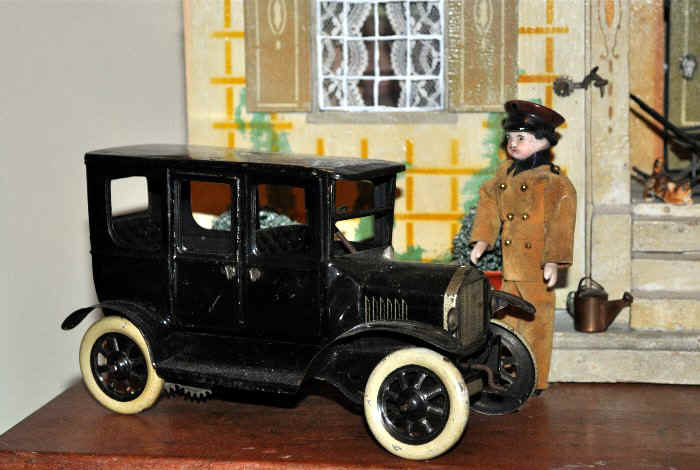
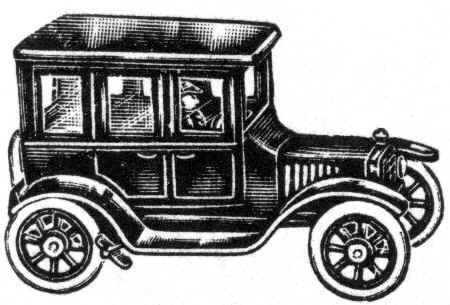
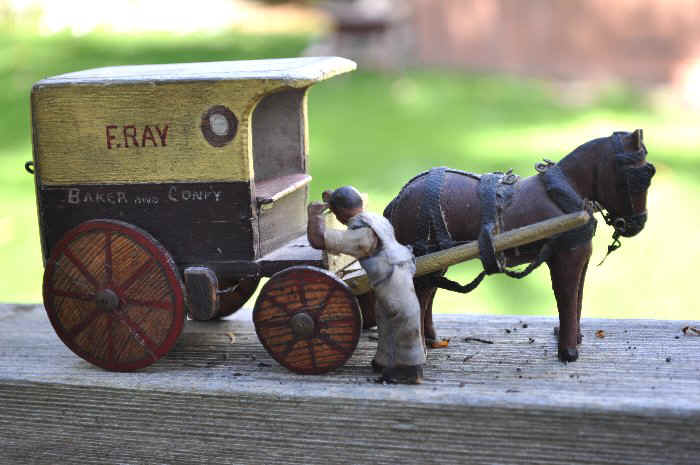
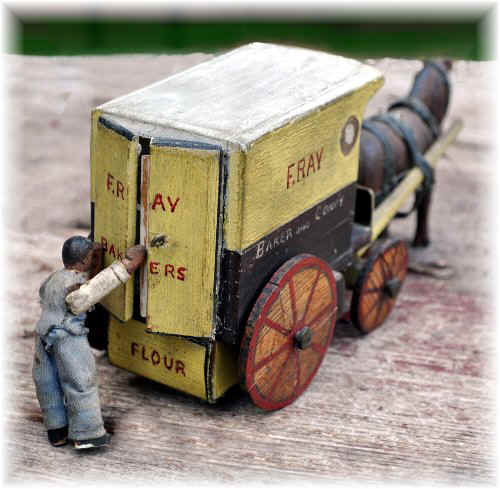
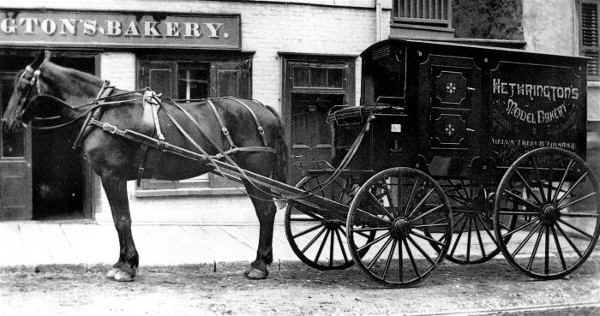
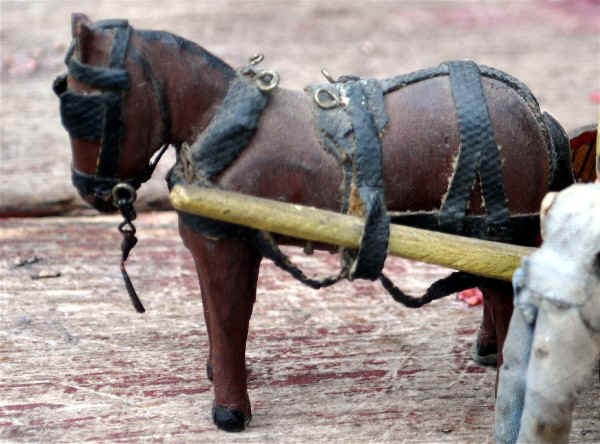

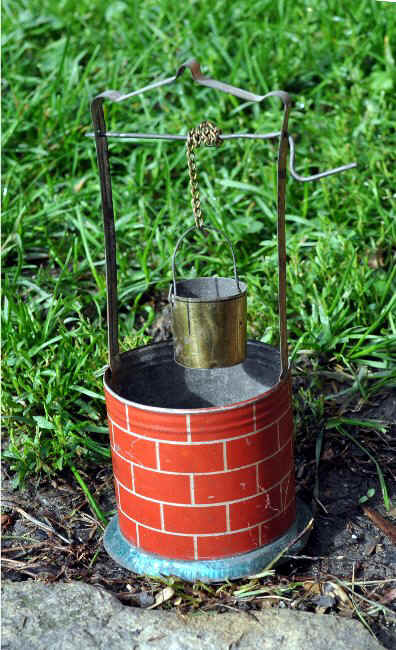 German bisque woman in original dress and shawl c1870; painted metal hen
and chicks, probably British, c1940s
German bisque woman in original dress and shawl c1870; painted metal hen
and chicks, probably British, c1940s 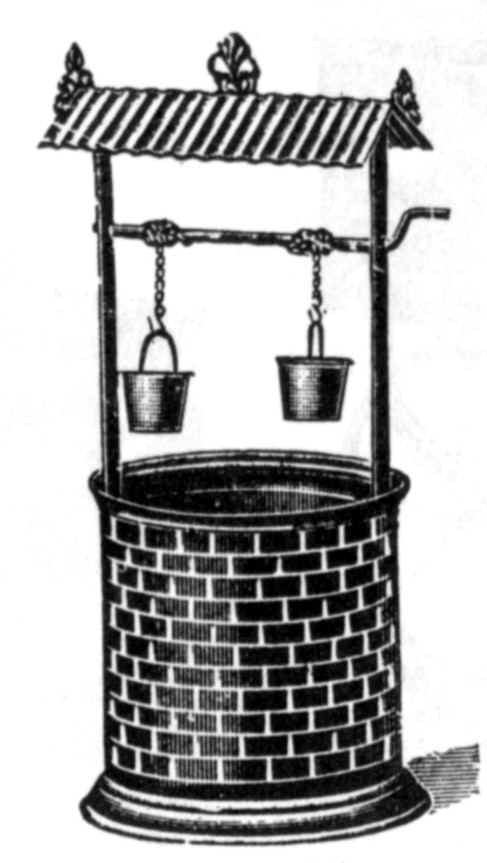
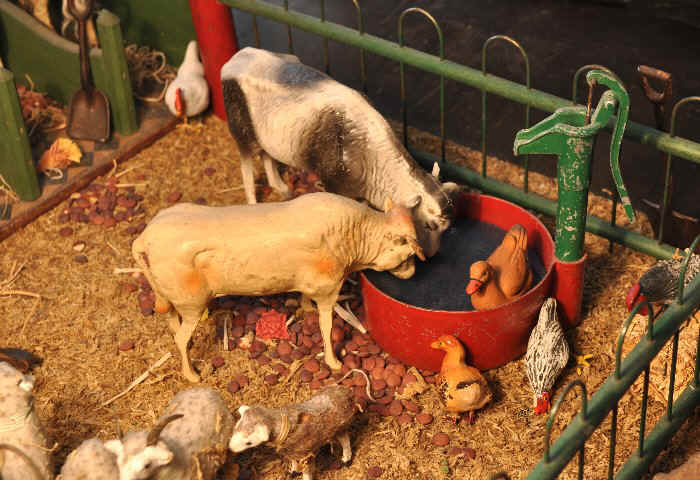
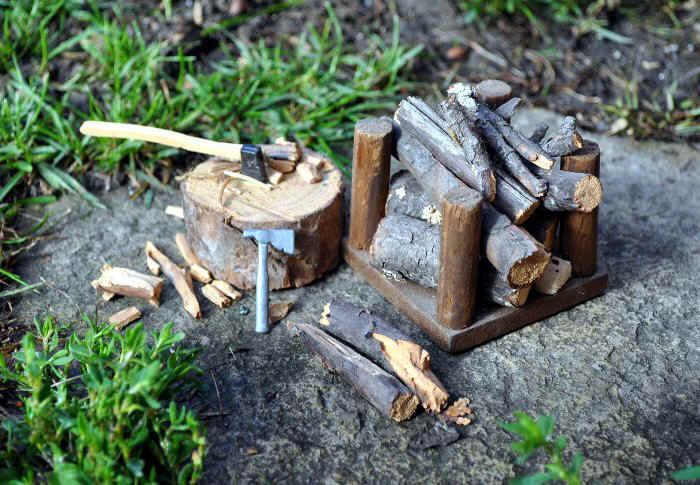
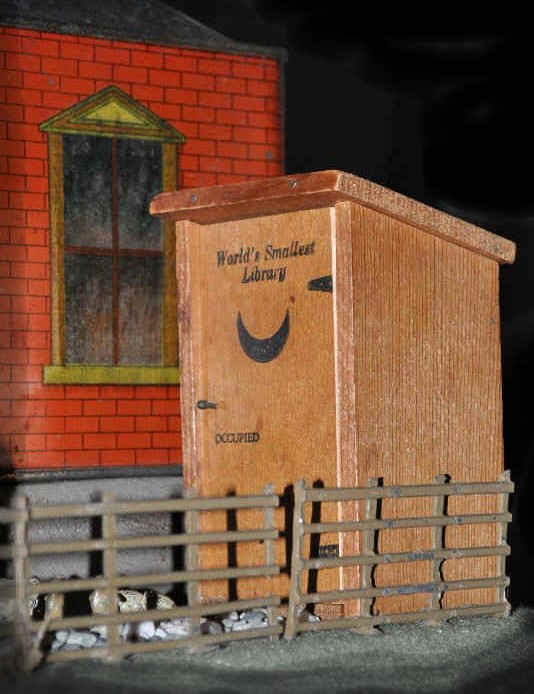
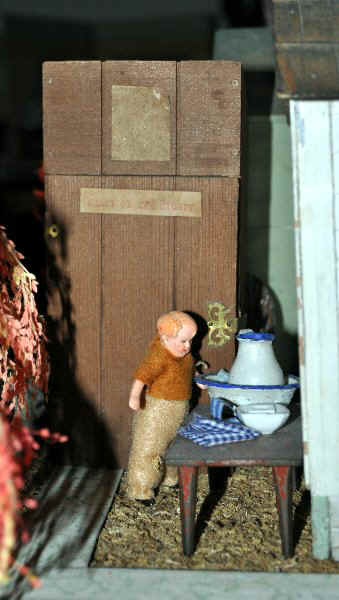
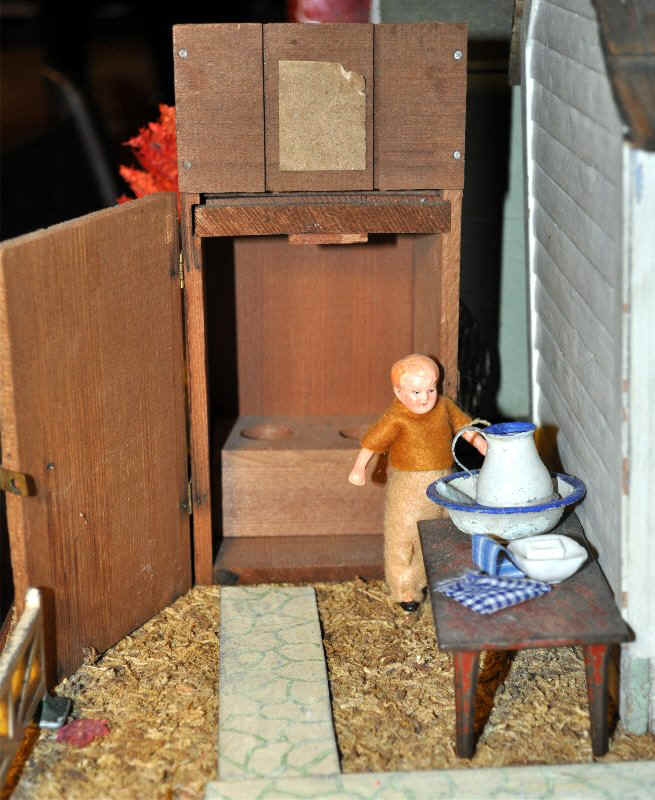
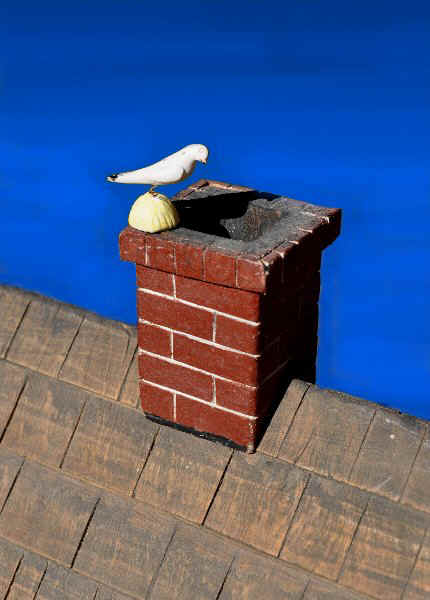
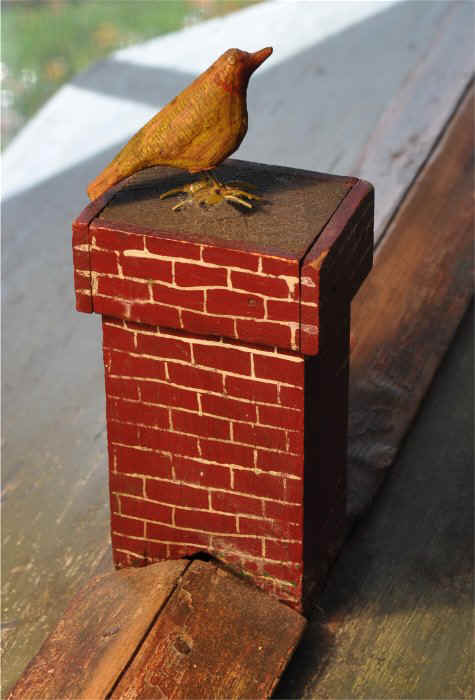
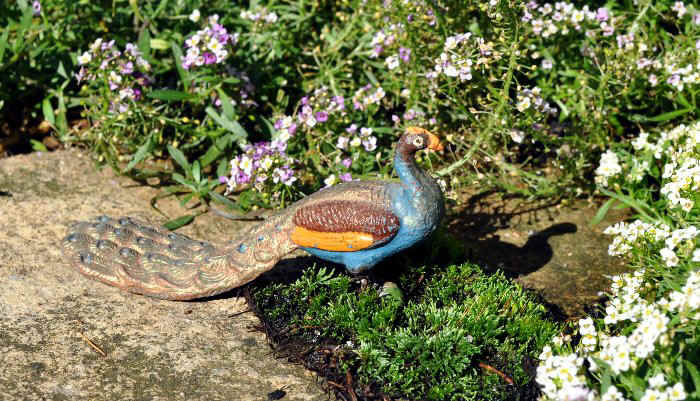


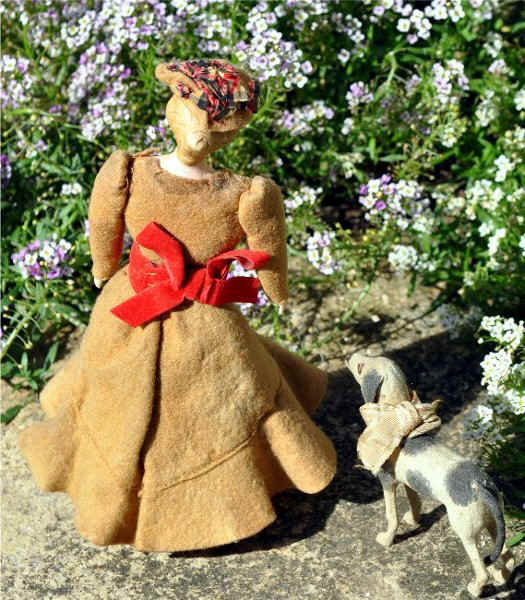
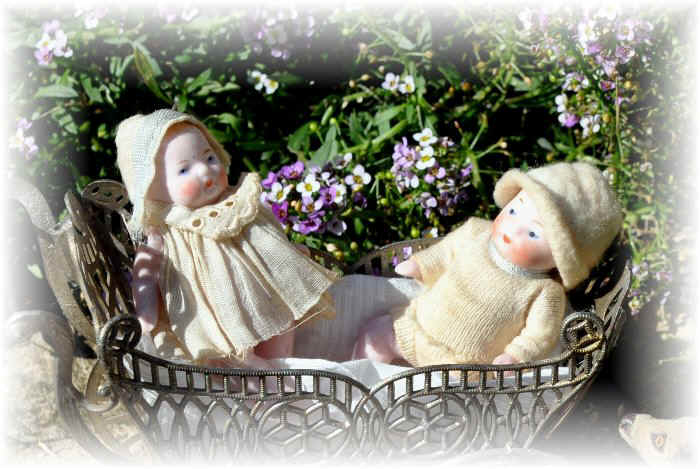

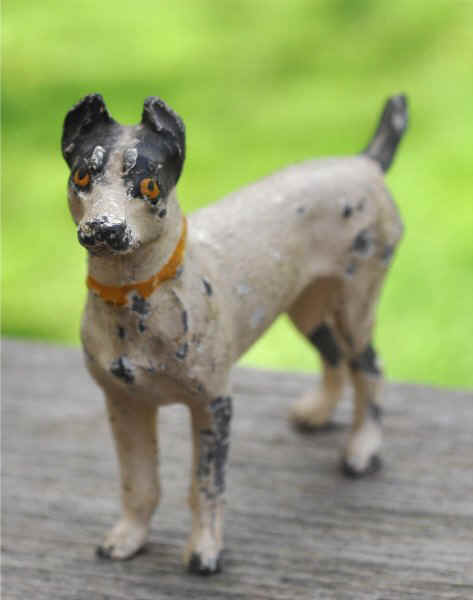 On the other
hand, this is the alert fierce look of a guard dog. Not marked but likely German, painted
metal, 2½ inches high.
On the other
hand, this is the alert fierce look of a guard dog. Not marked but likely German, painted
metal, 2½ inches high.